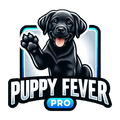737-215-3211

What Can I Give My Dog for Joint Health?
You notice it one morning. Your dog isn’t charging up the stairs like they used to. The jumps onto the couch turn into careful climbs. And those daily walks you both loved? They’re starting to drag a little. It’s not dramatic. It’s just... different.
As dogs get older — or even if they’re just very active — their joints can start to wear down. It’s a natural part of life. But that doesn’t make it any easier to watch.
The good news is you don’t have to just sit back and hope for the best. There are real, proven ways to support your dog’s joints and keep them comfortable.
How Can You Tell If Your Dog’s Joints Need Help?
Joint problems in dogs don’t show up overnight. They creep in slowly, one small sign at a time. Catching them early can make a big difference in how much comfort you can bring your dog later.
So what should you look for?
 Here are a few early clues:
Here are a few early clues:
- Limping or stiffness that seems worse after resting or in the mornings
- Trouble standing up or lying down, even on familiar surfaces
- Walks that are slower or shorter than usual — like they’re not as excited anymore
- Whining or flinching when touched, especially around the legs or hips
- Behavior changes, like acting grumpy, restless, or unusually quiet
And it’s not just older dogs. Even young, active dogs can show signs of joint wear if they jump a lot, run hard, or play rough.
If you’re starting to notice more than one of these changes, it’s a good idea to start exploring ways to support your dog’s joints now — not later.
The earlier you step in, the better you can help them stay active, happy, and pain-free.
What Can You Give Your Dog for Joint Health?
Here’s what helps — no guesswork, no complicated science degrees needed.
There are a few proven options that can make a real difference. Some are supplements you can add to their diet. Others might need a vet’s input. Either way, starting earlier usually works better than waiting.
Let’s break them down.
Glucosamine and Chondroitin: The Old but Gold Duo
Glucosamine and chondroitin are natural compounds found in healthy cartilage. They’re like the building blocks that keep joints cushioned and flexible.
When your dog’s joints start wearing down, these compounds help slow the damage. They can also ease inflammation and make movement a little smoother.

Most vets recommend starting here. It’s safe, it’s well-researched, and it’s often the first line of defense for aging or stiff dogs.
Quick tip: Make sure you’re buying a supplement made for dogs — not people. Human doses aren’t the same, and some added ingredients can be risky for pets.
Related: Best Puppy Vitamins and Supplements: Boosting Your Dog's Health
Omega-3 Fatty Acids: More Than Just a Trend
Omega-3s aren’t just a health fad. They’re real anti-inflammatory powerhouses.
You’ll usually find them in fish oil or krill oil. Adding these to your dog’s routine can help reduce stiffness and support better joint flexibility over time.
The trick is getting the dose right. Too little won’t do much. Too much can cause other problems. Always check labels and talk to your vet if you’re unsure.
Green-Lipped Mussel: Nature’s Secret Weapon
It sounds fancy, but it’s just a type of shellfish from New Zealand. And it’s packed with joint-soothing properties.
Green-lipped mussel naturally contains omega-3s, antioxidants, and other nutrients that support joint health. Some studies have shown it can reduce pain and help dogs move more comfortably.
You’ll often see it included in joint supplements, but you can also find it on its own if you want to add it separately.
Related: What Foods Help with Dog Allergies? 11 Superfoods to Try
Turmeric (Curcumin): Spice It Up Safely
Turmeric isn’t just for cooking. Its active ingredient, curcumin, is a natural anti-inflammatory.
It can help ease joint pain, but there’s a catch: it needs a little help to work properly. Turmeric absorbs better when paired with fat or a pinch of black pepper.
It’s a great bonus to a solid joint care routine — but it shouldn’t be the only thing you rely on.

Also, watch the dosing. Too much turmeric can cause stomach problems.
Prescription Medications (When Supplements Aren’t Enough)
Sometimes, supplements alone aren’t enough — especially if the joint damage is further along.
In those cases, your vet might recommend medications like NSAIDs (non-steroidal anti-inflammatory drugs). Carprofen is a common one used for dogs.
Medications can make a huge difference in comfort levels. But they’re not without risks, so it’s important to get regular checkups if your dog is using them.
And whatever you do, never give your dog human painkillers like ibuprofen or acetaminophen. They’re dangerous and can cause serious harm.
Natural Boosts You Can Start Today (That Don’t Involve Pills)
Sometimes, little lifestyle tweaks can work wonders alongside supplements.
You don’t have to change everything overnight. A few small changes in your dog’s daily routine can help protect their joints and keep them moving longer.
Here’s where to start.
1. Keep Them Moving — But Smartly
It might seem like giving your dog a break from exercise would help sore joints. But slowing down too much can make things worse.

Movement keeps joints flexible and muscles strong. The key is keeping it gentle.
Swimming is a great low-impact option if your dog likes water. Short, frequent walks are better than one long, exhausting trek.
The goal is to keep them active without pushing too hard.
2. Healthy Weight = Healthy Joints
Extra weight puts extra strain on joints — and not in a good way.
Even a few extra pounds can speed up joint damage and make pain worse. Keeping your dog at a healthy weight is one of the simplest (and most powerful) ways to protect their joints over time.
If your dog could stand to lose a few, slow and steady wins the race. Focus on small portions, healthy treats, and regular movement.
It adds up faster than you think.
3. Orthopedic Beds and Ramps Are Game-Changers
Where your dog rests matters just as much as how they move.
An orthopedic bed like Bowsers Oslo Ortho Bed with memory foam can cushion joints and make sleep more comfortable. If your dog struggles with stairs, adding a Higdon Outdoors Momarsh Ramp Stand for the car or a set of steps for the couch can save a lot of wear and tear on sore joints.
These little adjustments don’t seem like much. But over time, they make a big difference in how your dog feels day-to-day.
Related: Orthopedic vs Memory Foam Dog Beds
Quick Tips Before You Start Any New Supplement or Treatment
Before you buy every joint product on the shelf, it’s worth hitting pause for a second. Supplements and treatments can help a lot — but only if you’re smart about how you use them.
Here are a few tips to keep in mind:
- Always check with your vet first, especially if your dog has other health conditions or is on medication. What works for one dog might not be safe for another.
- Start slow. New supplements can sometimes cause side effects. Small doses let you spot problems early.
- Look for third-party tested products. Labels can say a lot of things. Independent testing gives you a better shot at getting something safe and effective.
- Stick with it. Supplements aren’t magic. They usually take a few weeks to show real results. Don’t give up too soon.
A little planning now can save you — and your dog — a lot of headaches later.

Keep Your Dog Moving and Happy
The fact that you’re here, reading this, says a lot. You’re doing what every good dog owner hopes to do — finding real ways to help.
Every dog is different. What works for one might not work for another. But starting the conversation now gives your dog a better shot at staying comfortable, active, and happy longer.
Small changes add up over time. Supplements, smarter movement, and a few lifestyle tweaks can make a bigger difference than you might expect.
If you’re looking for trusted dog supplements to get started, feel free to check out our selection. And if you want to learn even more ways to support your dog’s health, our blog has you covered.
At the end of the day, it’s not about doing everything perfectly. It’s about showing up, learning, and doing what you can — one step at a time.



Leave a comment